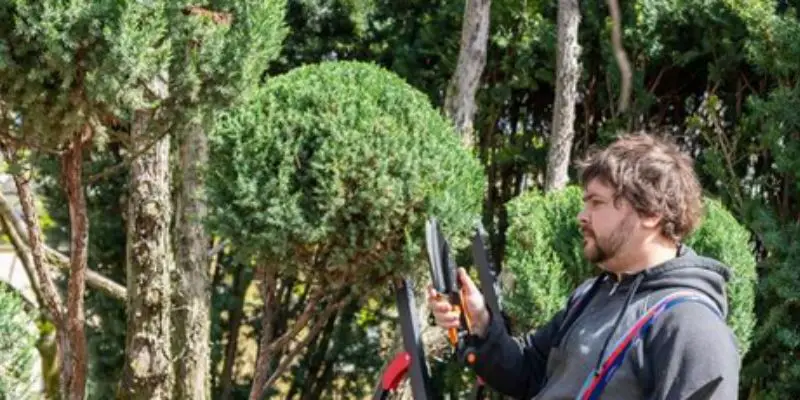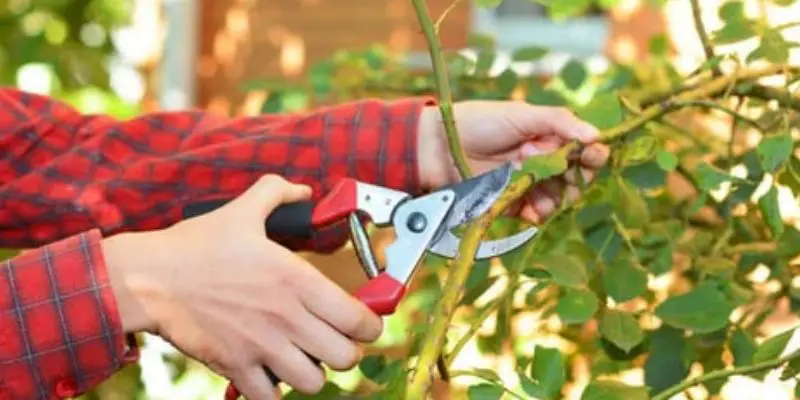With their evergreen foliage and sculptural shapes, junipers make striking landscape trees. However, without occasional corrective pruning, junipers can outgrow their space or become misshapen. Pruning rejuvenates overgrown junipers and maintains their natural conical forms. By learning how to prune juniper trees, you can keep trees healthy while accentuating their innate beauty.
Reasons to Prune Juniper Trees
Pruning is beneficial for juniper trees for the following reasons:
- Encourages dense growth – Cutting back leggy branches stimulates compact new shoots.
- Controls size – Pruning contains juniper growth and prevents overcrowding.
- Removes dead branches – Cutting out deadwood improves appearance and health.
- Thins congested areas – Selective branch removal opens up inner canopies.
- Maintains natural shape – Pruning corrects wayward branches to enhance form.
- Rejuvenates old trees – Moderate pruning renews vigor in mature trees.
- Allows more light – Thinning the interior lets light penetrate to lower branches.
- Improves air circulation – An open canopy has better airflow to prevent disease.
- Enhances fruiting – Pruning optimizes pollination and berry production.
- Reduces fire risk – Removal of dead inner wood reduces fuel load.
Proper pruning keeps junipers looking their best while improving their long-term health.
When to Prune Juniper Trees
Pruning junipers at the right time of year is key. The best times are:
- Early spring before new growth emerges.
- Mid to late autumn after trees enter dormancy.
- Dry summer weather in low fire risk areas.
Avoid pruning junipers in winter when foliage can desiccate. Also avoid pruning during spring sap flows or needle emergence. Stick to dormant seasons or high summer for best results.
Tools Needed to Prune Junipers
Having quality tools makes juniper pruning easier and improves results. Useful equipment includes:
- Bypass hand pruners – For smaller branches up to 0.5 inches thick.
- Loppers – Long handled pruners to reach branches high up from the ground.
- Pruning saw – Curved blades cut larger branches pruners can’t handle.
- Pole pruners and saws – For cutting high branches on tall trees.
- Ladder – Allows safe access to tops of trees.
- Safety gear – Gloves, goggles, hard hat.
- Rope – To safely lower cut branches.
- Burlap – Wraps protect bark when lowering branches.
- Wood chipper – For shredding prunings.
- Disinfectant – For sterilizing tools to prevent disease spread.
With quality tools, you can prune junipers precisely and efficiently.
How to Prune Young Juniper Trees
It’s essential to prune junipers from a young age to establish good structure. Here’s how to prune young trees:
Step 1 – Select a Leader
Choose one main upright stem to be the leader. Remove competing stems to focus growth into the leader.
Step 2 – Remove Lower Branches
Cut lower branches flush with the trunk. Avoid leaving stubs, which invite pests and disease.
Step 3 – Establish Scaffold Branches
Select 3-5 well-spaced branches emerging from the upper trunk to form primary scaffolds.
Step 4 – Head Back Long Shoots
Cut long shoots sticking out beyond the main canopy back by a few inches.
Step 5 – Maintain Central Leader
Prune any branches competing with the leader to maintain the main trunk.
Step 6 – Reduce Size
If overgrown, cut back secondary branches by 1/3 to 1/2 their length to slow growth.
With corrective pruning while young, junipers establish ideal form and structure.
How to Prune Mature Juniper Trees
Mature, overgrown junipers require rejuvenation pruning. Follow these tips:
Step 1 – Thin Congested Areas
Select inward-facing and criss-crossing branches in congested areas and remove them entirely.
Step 2 – Restore Natural Form
Identify branches ruining the tree’s shape and cut them back to a side shoot to redirect growth.
Step 3 – Remove Deadwood
Cut out all dead and dying branches back to living wood. Disinfect tools regularly.
Step 4 – Reduce Height
If the tree has grown too tall, cut the leader back by 1/3 to encourage bushier growth.
Step 5 – Rejuvenate Old Trees
On neglected trees, cut all branches down to just above thick green foliage to renew.
Step 6 – Edge and Profile
Prune for crisp lines and a smooth silhouette. Avoid leaving branch stubs.
With corrective pruning, overgrown junipers regain their natural elegant shapes.
How to Prune Juniper Trees – Pruning
Damaged Junipers
Storms and harsh weather can damage juniper branches. Follow these tips to repair injury:
1. Remove broken branches back to the trunk or a side shoot. Cut at a 45° angle.
2. Prune split branches back to healthy wood, ideally to a side shoot to hide the cut.
3. For partially uprooted trees, prune away 1/3 of the canopy to reduce wind resistance as the roots recover.
4. Monitor for pest infestations in weakened trees and prune away affected branches.
5. Delay major pruning until the dormant season, then remove badly damaged branches.
With careful repair pruning, damaged junipers can make full recoveries.
Common Juniper Pruning Mistakes
When pruning junipers, avoid these common errors:
- Topping trees instead of thinning – This ruins their natural form.
- Overpruning the interior – Never remove more than 30% of branches.
- Pruning in winter or late fall – Foliage can desiccate if pruned too late.
- Leaving branch stubs – Prune to the branch collar for clean structure.
- Using hedge trimmers – This ruins the tree’s shape.
- Neglecting disinfecting of tools – Clean regularly to prevent disease.
- Removing green inside a brown branch – Cut into healthy wood.
- Pruning heavily just before winter – This stresses trees going into dormancy.
Proper technique and timing are key for successfully pruning junipers.
Final Thoughts on How to Prune Juniper Trees
While juniper trees need only occasional pruning, it is vital for maintaining their signature shapes and keeping them healthy. With the right approach, tools, and timing, junipers can be pruned to enhance their elegant silhouettes. Prune while trees are young to develop good structure. Then make minor corrective prunes as needed to direct growth and remove deadwood. Your junipers will reward you with vibrant evergreen beauty for years to come.
Also read:
Best Electric Hedge Trimmer – Top 5 Picks and Buying Guide

Michael Glenn is a certified arborist and horticultural expert with over 15 years of experience in the landscape industry. His passion for plants and trees has led him to become a sought-after authority on pruning and trimming techniques. Glenn’s in-depth knowledge of proper pruning methods, timing, and tools has helped countless homeowners and professionals maintain healthy, aesthetically pleasing gardens and landscapes.
In addition to sharing his pruning expertise through practical tips, step-by-step guides, and expert advice, Glenn is also a respected author of pruning tool buying guides. His comprehensive reviews and comparisons ensure readers can make informed decisions when investing in quality loppers, pruning shears, saws, and other essential equipment. With a deep understanding of plant biology and sustainable practices, Glenn’s writing empowers audiences with the knowledge needed to properly care for green spaces.





